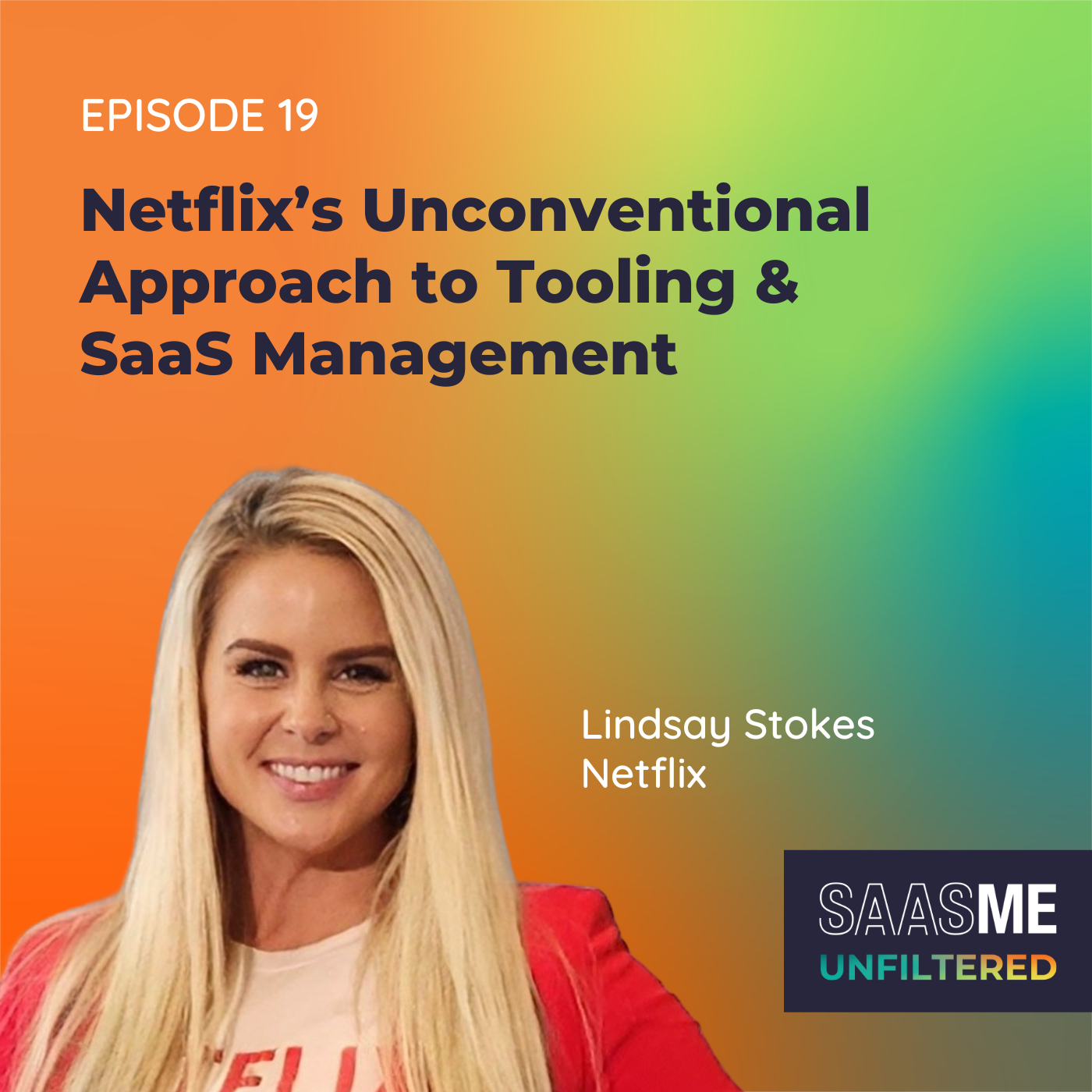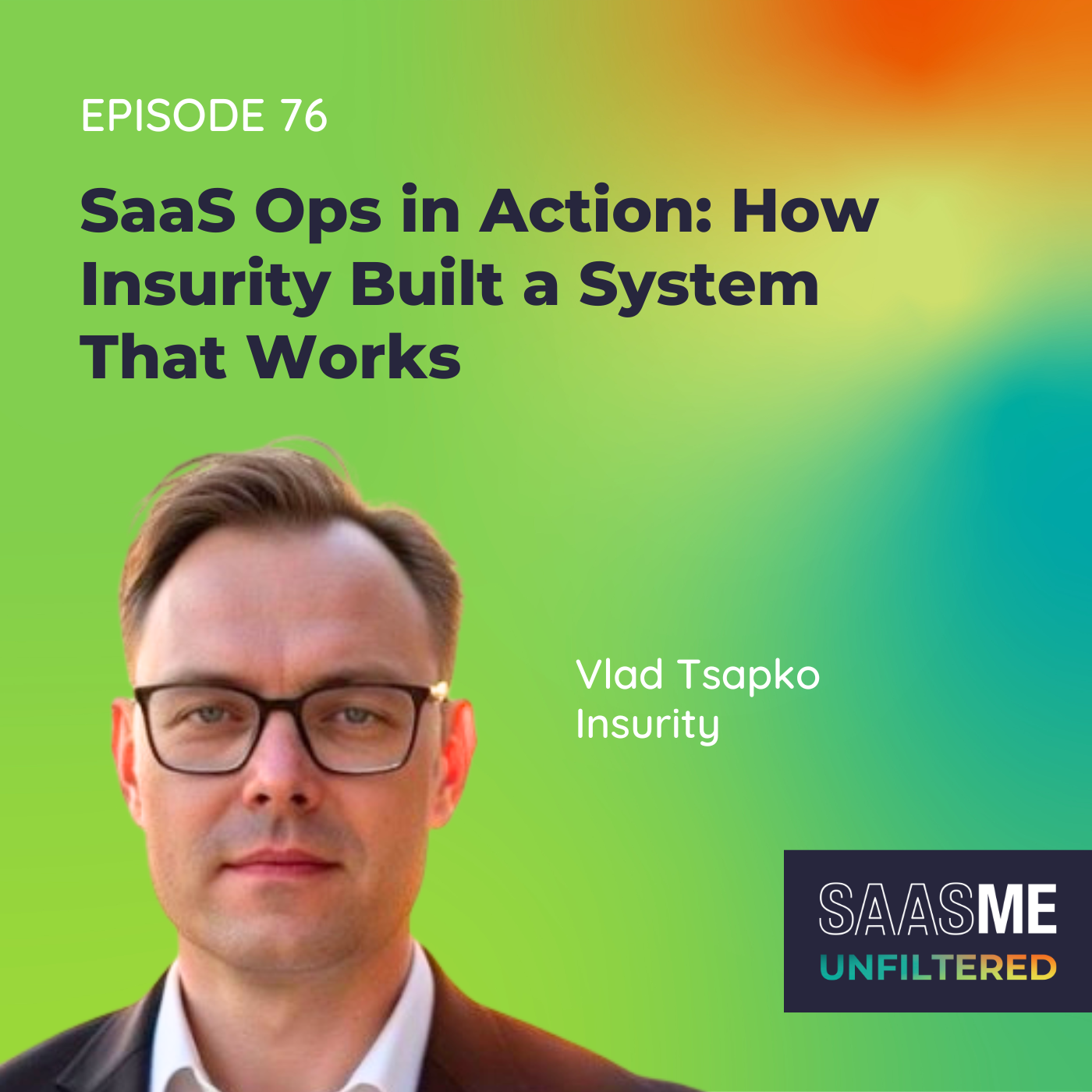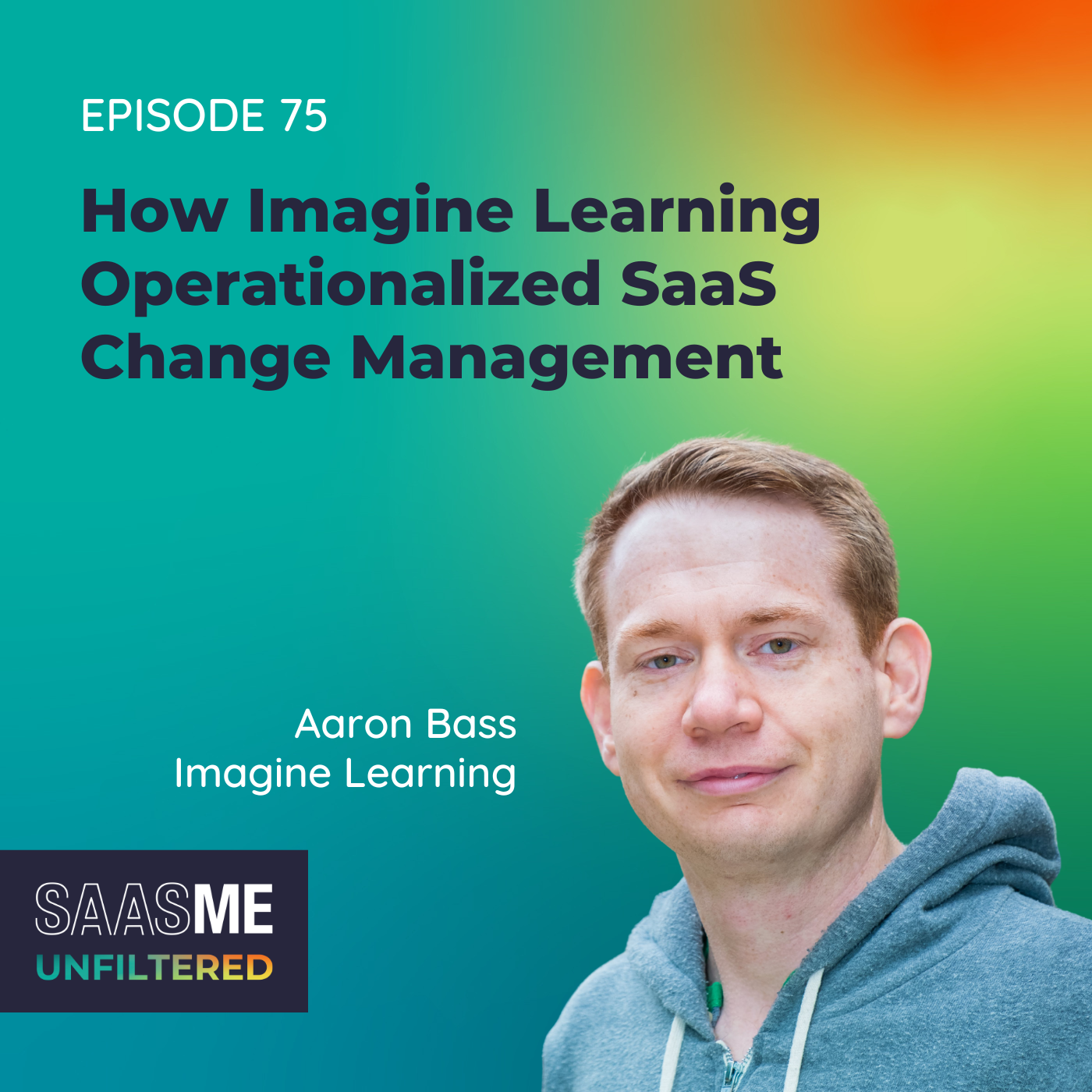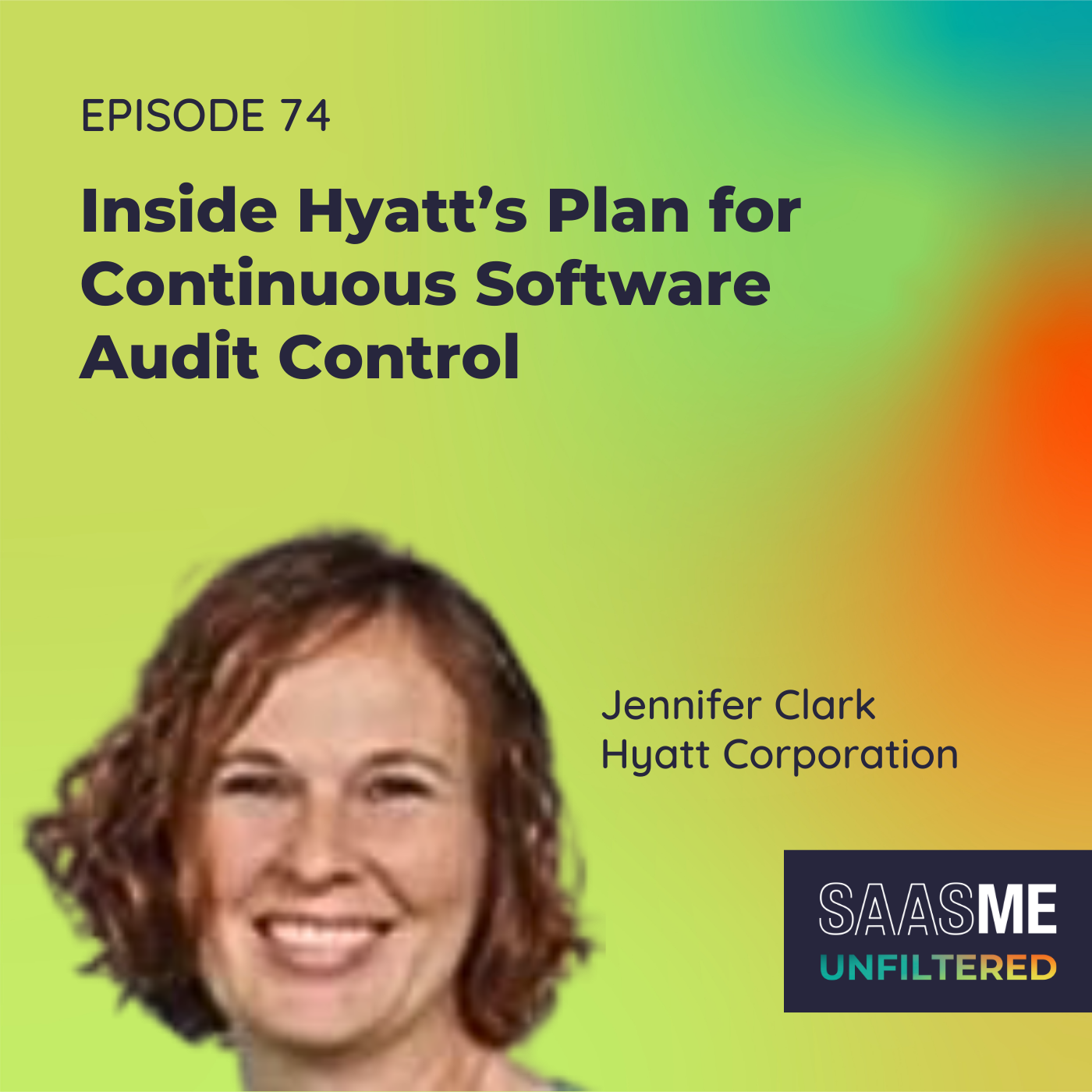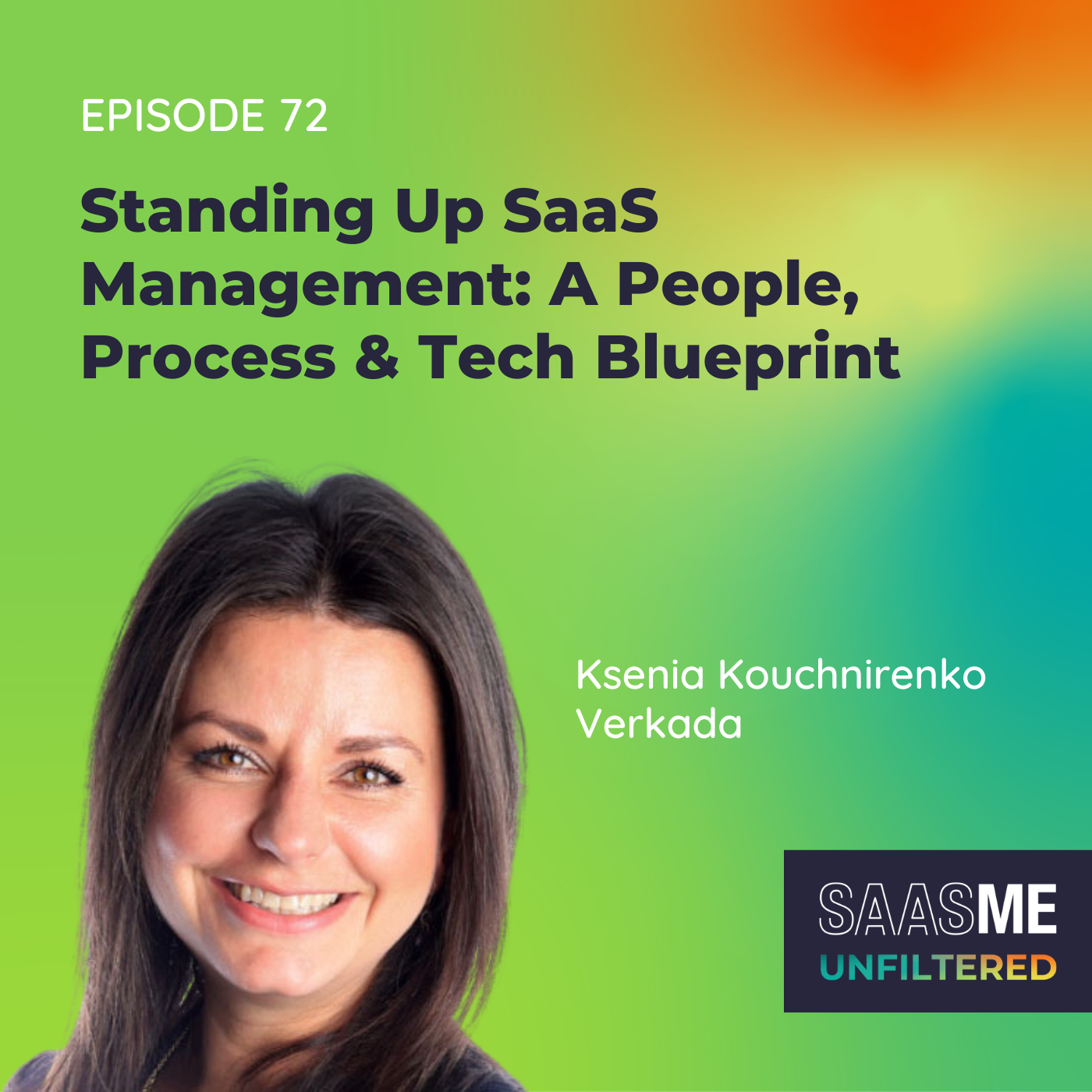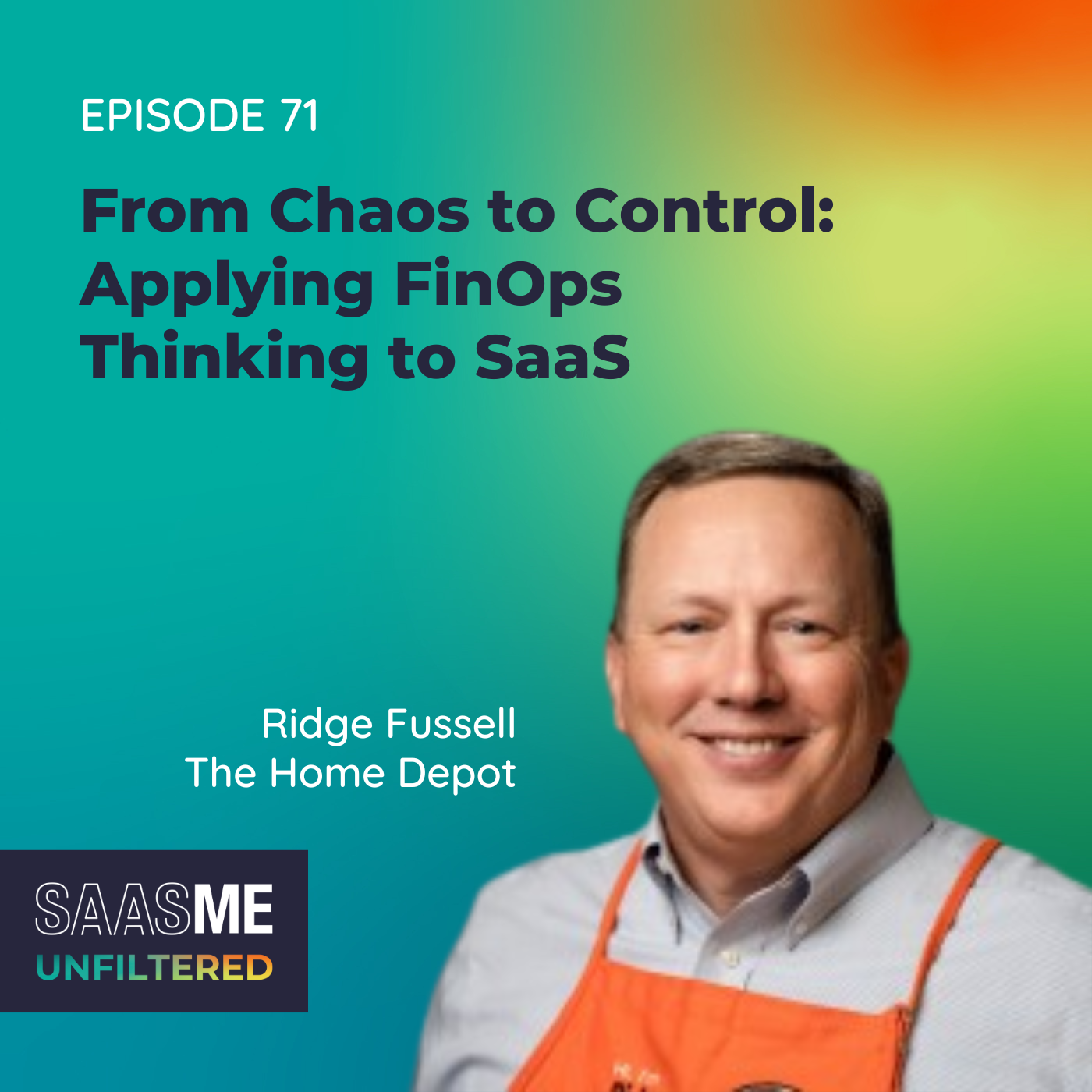Lindsay Stokes: Netflix’s Unconventional Approach to Tooling and SaaS Management
- 0.5
- 1
- 1.25
- 1.5
- 1.75
- 2
Lindsay Stokes: At Netflix, we also, just for more context, have what's called freedom and responsibility. So a user can have the tools that they need to do their job, but the expectation is that we all do this responsibly. And with Netflix's mission to entertain the world, we don't like the idea of putting guardrails preventing any employees from creating great content because they don't have the software they need to do their job. So you can imagine, with this model, the SaaS sprawl. And me, in my experience, I just knew it was going to be quite large. I think that everybody at Netflix maybe, just because that data wasn't visible, they weren't entirely sure how big.
Cory Wheeler: Hello, hello, and welcome to SaaSMe Unfiltered: The SaaS Management Podcast. The show with give- it- to- you- straight, real- life advice from pros knee- deep in SaaS every single day. SaaS management superheroes just like you. We're back for another episode of SaaSMe Unfiltered. I'm very excited to have you join us today. I'm Cory Wheeler, co- founder and chief customer officer here at Zylo. Today, I'm so excited to welcome our guest. She is a software asset management powerhouse in the tech space today. She spent some time formerly at Expedia. Spent time at Tableau, and then Salesforce through that acquisition. At Expedia she began on a finance and procurement path, moved into ITAM at Tableau and Salesforce. And as an IT and SAM leader today she is certified in software asset management, program management, process improvement, vendor management, and contract negotiation. Today, she is the IT software asset manager at Netflix, where she is creating the global ITAM strategy, setting that vision and KPIs for the program, hiring and building out an internal and external team. And on top of all of that, in her spare time, she loves dogs, craft beer, yes, and the great outdoors. So welcome, Lindsay Stokes, to the SaaSMe Unfiltered podcast. How are you, Lindsay?
Lindsay Stokes: I'm doing great. Thank you so much for having me. I'm really excited to be here.
Cory Wheeler: Well, we're really excited to have you on. I think your journey is one that our listeners will learn a lot from as you look to build out ITAM, develop more mature practices, and start to measure that out internally at Netflix. So before we jump into that I want to jump into our hot- take section, where we'll present a hot take and get your take on that once complete. Are you ready?
Lindsay Stokes: I'm ready.
Thom: Hey, everyone. Welcome to Hot Takes with Thom, a give- it-to- you- straight point- of- view on SaaS management and optimization. Today's hot take is that homegrown tools aren't cut out to solve the root problem that SaaS presents to organizations today. Why? Let's consider what most folks are doing today, using a spreadsheet. It's literally a single moment in time, not to mention the crazy amount of work you're probably doing just to scrape all that data together. I can tell you without a doubt, you don't have all of it either. The same goes for enterprises who build a tool in- house. Sounds good in theory. You have control of what the tool will be. But at what cost? A homegrown tool doesn't give you full visibility. For example, 40% of SaaS transactions are misclassified on expense reports. Would you rather miss out on that data or manually review tens of thousands of lines of employee expenses every single month? Ongoing discovery doesn't exist. The average large enterprise sees 13 new applications entering its environment every 30 days. Do you know all the applications available on the market so you can flag it when you see it? It's labor- intensive. Enterprises have more than 600 apps in their portfolio. So for every one of those apps, do you really want to build a categorization taxonomy, manually assign functions to those tools, research security data like SOC 2 and GDPR, build one- off API connections to look at utilization, maintain contract data, access industry benchmarks, and send renewals with contextual actionable insights? I'm getting tongue- tied just thinking about all of it. I could go on and on, but ultimately building your own SaaS management tool is a bad business decision. It's really just a glorified spreadsheet. Discovery is point- in- time, and only captures part of the picture. It's manual and time- intensive and prone to error. I mean, how can you really trust that data? You're taking resources away from your core business purpose, and you're looking at multiple full- time headcount just to maintain this with a very specific skillset, not counting the IT and procurement roles managing the actual SaaS portfolio. Bottom line, don't reinvent the wheel and don't make it harder than it has to be. There are dedicated purpose- built tools like Zylo available to help you manage your SaaS your way.
Cory Wheeler: Lindsay, your hot take. Why don't homegrown tools just cut it for SaaS? Do you agree with that? What's your hot take on that subject?
Lindsay Stokes: Yes. I couldn't agree more. And honestly, most companies can't afford to wait for a tool to be built to have all the features that you just mentioned if you're doing it internally. You'd have to wait years to get even part of the ROI of building it internally. And honestly, at Netflix we kind of had the same situation, where we didn't even really have the resources to perform a lot of those tasks manually while waiting on a tool to be built. Also, I think a lot of companies can relate. You need data to help inform decision- making like yesterday. So waiting for that is really difficult, especially when you need that visibility as soon as possible.
Cory Wheeler: Okay. That's really, really wonderful to hear, and I love that perspective. I think you're in a really exciting place. Being able to build out ITAM, and SAM, and SaaS management policies, and procedures, and strategies inside a very fast- growing tech organization. I spent time at Salesforce, and Salesforce experienced the explosion of SaaS before most other organizations did at scale. And Netflix is going through that as well, and we're seeing the advent of a lot of enterprises now reaching scale where SaaS management isn't just a 500- employee problem, where they just have too many apps. Now, it's becoming a governance problem, a security problem. Certainly a cost problem as well. So I can't wait to dig into this with you at Netflix, but I want to back up just a little bit. I walked through, in the overview, how your career profile has gone. But maybe walk us through that. How did you get started in your career? What were some of those pivotal moments that really led you to get to this point, to jump into SAM, and now be building and leading SAM at Netflix?
Lindsay Stokes: Yeah. It's actually been quite an interesting journey. I held a lot of different roles starting out, but I felt like the pivotal role for me was actually at Expedia. Just like how my career started, I wore many, many hats at Expedia. I changed departments frequently. I was still really trying to figure out what I wanted to be when I grew up. So I actually eventually, through many different roles, landed a procurement ops gig. So that was out of the Springfield, Missouri office. And it was such a big deal back then because that office was very operations- focused, and didn't really have many opportunities to work with corporate out of Seattle in most of those roles. So this role was one of those, where there was just a lot of relationship- building and support at that corporate level. I spent a few years in procurement, and eventually was promoted to lead the team, and I really enjoyed that role. At this point, I had built great relationships with my partners like ITAM, which brings me to that pivotal moment that brought me to ITAM. It was actually through relationship- building and offering great support over the years that I was offered the opportunity to join their team. In all honestly, I had zero experience, other than knowing what they purchased. So they definitely took a chance on me, thus beginning my exciting new life in ITAM. I also relocated to the Pacific Northwest. So, I relocated to Seattle for that role. I did immediately love it, and I wanted to prove why they hired me. So I wanted to learn as much about how to be successful in this space as possible, and my knowledge from the procurement side was something no one else had. So, that actually came in really handy on numerous occasions And I actually fondly referred to my tenure at Expedia as Expedia University, just because of that learning path that I went through, and learning so many different sides of the business, and how that actually overlaps with ITAM. So, that was really monumental. And then at Expedia, the program was actually a pretty well- oiled machine, and it had been in place for over a decade. Some of it was actually pretty mature at that point. So, the opportunity to actually join Tableau was to build a program from scratch. So the decision was really exciting, and very scary. Not obvious at the time. I was quite terrified, actually. I'd never built a program before, so that imposter syndrome was really setting in before I even accepted the role. But you sometimes have to remember that on the other side of fear is growth, and my thirst for knowledge was still unrelenting. So I joined, and I built a hardware and a software asset management program that was actually still being improved and matured when Salesforce actually came in and acquired Tableau. So, yeah. No program is perfect, and there's always room to improve in this space, and build upon and mature it, but I felt like I was back in with another well- oiled machine. This is obviously by no surprise, since it's led by actually a previous guest on your podcast, Jason Owens, who is an exceptional leader. So, it was a difficult decision to leave that environment too. But when the call for Netflix came, it was another opportunity to build and to lay a foundation. I'm a huge Netflix consumer. I've been a customer since DVDs were arriving in the mail.
Cory Wheeler: Man. Oh, yeah.
Lindsay Stokes: So big fan, and that one was actually a no- brainer. So, yeah. Long story short, I do love ITAM. I feel like I finally found that passion in my work. No two days are the same, and I feel like I'm constantly challenged and forced to think outside- the- box, and I get to solve really impactful business problems. I mean, who doesn't want to wake up and do that every single day?
Cory Wheeler: Yeah. What a great overview. The varying levels. Jumping into building an organization from scratch. Jumping into a well- oiled machine to both benchmark your work and learn about what you're going to do in the future is so amazing. I often correlate procurement and software asset management as very, very similar functions. They are groups within a larger organization, and maybe not the primary group. In finance, finance is driving FP& A and accounting. And procurement usually sits somewhere in there, because they're driving optimization. In IT you have enterprise RT, IT and engineering, and some of those other areas. And software asset management is always there. So, they're smaller groups within these large functions that are charged with very similar things. Have your eyes across the entire organization. Do what's right for the company. Look for opportunities to drive scale, and efficiency, and improvements. In that way, it is an incredibly strategic role. It's one that you define as you go, if you throw yourself into it. And your experience, my goodness, to be able to get all of that through those stops and jump into different points. It feels very, very well- rounded as you continue to embark on the overall journey at Netflix. So, just an observation there. That that level of background really lends itself to building now, in your own image, a world- class SAM hardware asset management ITAM organization at Netflix. So with that, I'd love to take a step back and start to think about your current role. Your role today at Netflix. So, talk about that journey. Coming in, probably through the interview process. Or maybe, a lot of times after you jump into an organization, what really was the impetus for Netflix saying, " We need that level of visibility. We need a strategy around software, and software asset management, and ITAM"? We affectionately refer to it as that oh- shit moment internally. Was there an oh- shit moment for Netflix, or was it just continual improvement and a larger strategy? How did that all come to be?
Lindsay Stokes: Yeah. Great question. There's actually been a couple of those moments. And to my benefit actually, one of those happened before I joined, which is the reason I'm here. So, that's exciting. But yeah, when I joined, I feel like when you come in and you take that time to really just listen to current state, I took the time to really understand the business, and what was happening, and the process that was in place. And honestly, that moment for me was just shortly after our learning and talking to a lot of the stakeholders in this whole process. There's really hardly any data. There's disparate tracking, a lack of resources, and no standard process across- the- board. So at Netflix we also, just for more context, have what's called freedom and responsibility. So a user can have the tools that they need to do their job, but the expectation is that we all do this responsibly. And with Netflix's mission to entertain the world, we don't like the idea of putting guardrails preventing any employees from creating great content because they don't have the software they need to do their job. So you can imagine, with this model, the SaaS sprawl. And me, in my experience, I just knew it was going to be quite large. I think that everybody at Netflix, maybe just because that data wasn't visible, they weren't entirely sure how big, and I think that folks assumed that the responsibility part was happening on a regular basis. But as we in the industry know, that's not always the case in sometimes in understanding what their responsibility is. Because what you don't know, you don't know, and there's a lot involved with bringing new tools into the environment. So, yeah. That moment, I knew we needed visibility first. I mean, how could we make informed decisions about what's best for Netflix without data to tell the story?
Cory Wheeler: That's it. It always starts with data. I love it. Did this feed into, as you came in, a larger company directive? Was Netflix going through anything where they said, " We need to be responsible around expenses"? Was there a larger charge for the organization? I ask that looking at the majority of our customer base that is now flattening headcount, flattening OPEX, trying to drive down OPEX. Was there anything really leading that charge as a larger- scale business outcome that your program fed and continues to feed into?
Lindsay Stokes: Grow expenses slower than revenue. And with what we were doing here, ideally we want to not only, one, give the data to help basically make the decisions of how we grow those expenses, and ultimately we want to reduce it. Because there's such an opportunity with software asset management, with just knowledge of how things are operating to make better decisions. So the first thing on my mind is, " How are we effectively managing this? Are there reclamation opportunities? Are there a lot of waste, and opportunities to reclaim all those?" The other big one is even right- sizing our investments. Because if you're growing basically the SaaS space based on your headcount year- over- year, that's not really a good indication of if that is actually being used. It also leads into redundancy. We have a lot of different tools that do the same thing. And there's a lot of tools out there that I think by design they have a lot of features, and some do better than others in some areas. So, there's always going to be that redundancy. Because again, with our model, folks want to use works best for them, and that might not always be the same tool.
Cory Wheeler: Okay. So redundancy, big theme for the year. Really getting out in front of all of these different insights throughout the business. A lot of things that you have a hunch that are happening, but then you have to confirm that. So, what's that journey look like? How did you do this before we began working together? What was that process that you went through to try to validate, get the data, and action on it?
Lindsay Stokes: Yeah. Actually, the journey is still underway. So 2023 is going to be a really big year for us, since now we have a tool like Zylo helping us centralize our repository and really just gathering what's out there. What have we been purchasing? What are people using? We really want to have the opportunity to use that data to sunshine the plethora of opportunities that we have. That's also in tandem with following a standard process, which we didn't have previously. So we definitely have a lot of work to do and some big 2023 goals, and a lot of that even includes that user education. We also want to offer maybe a preferred list of software, we're actually calling it Paved Road, really just to give users I guess what I would say is a white- glove treatment when it comes to software so they don't have to manage and maintain it. So we will have support from a renewal perspective. From maintaining all of the licenses, the reclamation opportunities, and all that. And that's actually in hopes that folks would prefer to go that route rather than bringing in a lot of other obscure tools. We know that's going to happen. I mean, there's going to be use cases where folks have to go outside that Paved Road, but I think that's part of the education process. If users have something they can choose from, and maybe if we offer this white- glove experience, they're more likely to use those options. So, yeah. Exciting things coming this year. I'm really looking forward to seeing how this improves, actually, the overall user experience as well.
Cory Wheeler: Yeah. It's going to be a really fun year. What are some of those fundamentals that the program is based around? I guess what I'm leaning towards is, is this really beginning with cost reduction as a primary metric and something that you're looking to pin the program to? How do you think about what that lens is going to be this year as a priority?
Lindsay Stokes: Yeah. It's really interesting, because I feel like there's so many priorities now that we have data to actually prioritize. So, it's one of those things. We have an emphasis on security, and I feel like obviously we want to keep Netflix data secure. And then also, in the past we didn't have as much of a focus on the cost reduction part. But that's a really big theme, I feel like, company- wide this year, where we want to show how we can contribute to that. Obviously, as we mentioned, software asset management, there's so much low- hanging fruit and ways to contribute to that. So I feel like we definitely have more than one focus area, and they're all very important. And this is only just a couple, so I feel like we have a lot of priorities for the year. But yeah, there's just so much opportunity to, like you said, I mean, impact the company from a cost= reduction standpoint. Also, I already mentioned, improving the user experience, because I feel like in the past that's been quite painful. So that's a really important aspect too, because we want our employees to feel productive and not spend a lot of time churning on getting the tools they need to do their job. But yeah. And then also we want to, further on... the complete visibility is our North Star. We want to continue uncovering what's out there in the environment. We definitely want to continue to see the opportunities that we have to either, again, right- size investments, consolidating some of these opportunities. Because a lot of companies, you might even have corporate agreements, but then there's also users' expensing that they could be consolidated under those agreements. So, there's just so much. I feel like I could go on for days about the opportunities. So I hate to say we're focusing on so many, but we just have so many opportunities, like many companies.
Cory Wheeler: But you framed that out so well. You said, " We're finding these opportunities, because now we have visibility into all of this." That's something that we've talked a lot about with all of our customers, is if you want to set a comprehensive strategy, you can't do that unless you understand what you're working with. You're not able to set a governance strategy around shadow IT until you see the level of the problem or the opportunity that exists. So, that's so well- articulated. That now that we have this visibility, now we're able to build all of these out. That is critical to any strategic program around software and SaaS management. And complete visibility being the North Star is something we operate off of as well. Okay. So, I want to dig into the concept of freedom and responsibility. Super cool concept. Zylo started in 2016, and most software companies would be saying things like, " We don't get in the way of our users, our engineers, our devs. They're here to get work done. We manage everything on the back end, and no friction is the strategy." For a lot of our customers now, that has shifted pretty quickly and pretty radically in an effort to bring the bottom line back into where it needs to be to overall have your revenue and expenses hit the right targets. Fundamentals matter now. So internally at Netflix, I think you guys have gone through evolution of this as well. But how do you manage and how do you balance cost optimization with freedom and responsibility? Responsibility definitely indicates that, but those two concepts are a little bit at- odds sometimes. So how do you manage that, and how has that changed since you began at Netflix?
Lindsay Stokes: Absolutely. It's striking that balance, and there's a lot of different ways that we influence this. I feel like, as I mentioned, we don't have a lot of guardrails. And with that freedom, we expect the responsibility. So I think what we're trying to do is, a little bit more emphasis on the responsibility side. So from our perspective, it really just means educating those users, like I mentioned before. And letting them understand what's available to them, publishing what's out there, and then also maybe even making those suggestions with Paved Road. Like, " Hey, this would be more beneficial for me, if I went this route rather than this route." So, we really make a strategic bet on that being really successful. Also, we want to focus on being a bit more proactive. So in the past, we've been very reactive when it comes to any kind of application entering the environment. So we want to start being a bit more proactive, and not necessarily to put guardrails. It's really just to understand users' needs, and letting them know what's already existing and how it might help them. And then if there's anything beyond that, obviously supporting their need. And again, informing the responsibility of, if they were to use this tool, it fits what they need. Because again, not all applications... We can't support them fully from a sourcing perspective, or even a license- management perspective. I mean, there's just a lot of work involved in that. So, we've curated a list of what we can support for this time. Obviously, we want to expand upon that. But just letting the users know what that means for them if they want to continue using that, and their responsibility for it. So we're hoping that they'll take the curated list, white- glove process over bringing something in that would involve more work for them.
Cory Wheeler: Yeah. You hit on the proactive versus reactive, and I think sometimes people throw that out there. " We want to be more proactive than reactive." But in a role within ITAM and procurement, it's table stakes. Because when you are reactive, you are red tape. You are controls. You are getting in the way, and you are not viewed as an enabler to the business. You're slowing business down. But when you are proactive, it's a delightful experience. Your end users, when you're bringing them those insights, they want to engage with you because they have the time and the strategic space to be able to do that. But being reactive gives you a bad reputation throughout the organization, so owning this data is super cool. So, that-
Lindsay Stokes: I love how you said that, actually. Because I feel like, in my experience, that's just been met with that kind of perception. If you are reactive in letting somebody know that, " Actually, this is a huge risk for the company, and we really want to recommend that we take another approach," sometimes those teams already have implemented it, and are using it, and it's part of their process. And that's so much more difficult to unwrap and redo than if you catch it from the beginning, and then they're like, " Oh, okay. Well, I need to explore other options early- on." So I love how you said that, because that's a real problem too, when you have that reactive approach. So that's the goal, is to move more proactive for sure.
Cory Wheeler: It makes work a lot more fun, that's for sure, as well. So most organizations that I talk to, certainly customers that we work with, OPEX. Right? OPEX is the focus. Right now, most headcount is flat, and that's your number- one OPEX line item. Your second- largest OPEX line item for many organizations is SaaS, is technology, is software spend. So, what role do you play in that directive today at Netflix?
Lindsay Stokes: Yeah. Well, I mean, I feel like we always have a contributing role when it comes to OPEX with software. There's just so many opportunities to... Like we've been talking about in this whole conversation, basically we want to showcase how we can help, for one, because now we have a lot of data to help inform what's happening. So now that we have our tooling in place, we're basically actioning on that, and we are trying to sunshine a lot of the opportunities where we can contribute to reducing that effect. So again, part of our 2023 strategy is really just bringing in a lot of the application owners, letting them know the opportunities, and helping them. Because again, we have a very small team. And we definitely still have a lot of folks managing some of the tools in our environment, just because of the resourcing. So, we're relying pretty heavily on a lot of those admins to basically execute on a lot of these things. But again, they need the data. They need the information. If you're in a portal and you're adding in users because they've onboarded, a lot of times that might be it. That might be the sole reason they're in there. So, not noticing a lot of the other opportunities. And not all software application portals have the analytics to alert you that, " Hey, there's an opportunity. Go in here. Pull this license back. This person's not using it." Some do, but not all of them. So, sometimes it might just take a little bit of a nudge. So now that we have a lot more data centralized and the software asset management team can see that, we can start sharing a lot of those opportunities. And it's visible. So that's the other part, is visibility is so huge. Because now that we can see it, we can start talking to these teams. Is their issue a resourcing problem? Do they not have the time to go in and effectively manage this? So then that way too, that raises another indicator that we need some attention on this. So I think we're going to learn a lot this year, and I'm really excited to partner with a lot of the teams to understand how they've been managing these and what they need to do it more effectively.
Cory Wheeler: Yeah. Showcase the data. It's data- driven. If you begin there, you're never wrong, if you're always looking at the data.
Lindsay Stokes: Yeah.
Cory Wheeler: It's the underpinning of any great org. So as you look at those critical ingredients for success in SaaS management, how are you looking to start to measure success for your org around SaaS management at Netflix?
Lindsay Stokes: Yeah. It's a great question. Again, because this program is so new, we're looking at a lot of those KPIs. And honestly, Zylo's been really helpful to showcase insights into what we should be paying attention to and how we want to measure the success against those opportunities. So I feel like that's going to be something that is definitely going to be built upon over the course of this year, as we start to realize more things that we want to start reporting out and sharing where those opportunities lie. And then obviously, how effectively we're actually taking action against those. So, I feel like a lot of those are still being built. But it's going to be a big year for that, especially as we partner with all these teams to actually make a lot of these impactful changes in the way that we're managing SaaS.
Cory Wheeler: Yeah. You've shared with us historically that one of the biggest ingredients is patience. Right?
Lindsay Stokes: Mm-hmm.
Cory Wheeler: It doesn't happen instantaneously. When you're looking at apps, when you're looking at licenses, you've got to take the right approach for your business. So, I love how you've framed that out. It's patience, because it all is a methodology and takes that time.
Lindsay Stokes: Yes. Nothing happens overnight in this space, I feel like. That maturity takes time, and that also takes patience. There's a lot involved, and a lot of stakeholders and stakeholders' processes that you have to take into account. Especially when you've been building a program and a process, because SAM touches so many different things, and it's the tracking of that whole lifecycle of going through all of these different teams. And just, one of those things is, again, it just takes time. And there's no one- size- fits- all either. So, it's not a lift- and- shift of a process. You really have to take the time to really understand the business needs.
Cory Wheeler: Yeah. So we're talking about the strategy, and the wins, and the KPIs, and the successes. But maybe turning that on its head just a little bit is, in your experience, where have you seen some of those missteps? Maybe some of those trip- ups that organizations have around asset management when they're looking at SaaS. What are the missteps that you might have even experienced or learned from when addressing software- as- a- service and the strategy to take on there?
Lindsay Stokes: In my experience, security's always been, I guess, a big one to balance. The freedom and responsibility, like at Netflix. And then even at other companies, we've even talked about the reactive versus proactive. I feel like that's one that, depending on how mature you are... And then that takes time. You want to move to a more measured approach. Again, we don't want guardrails in place. So, we want to strike the right balance between this approach. And obviously there's so many applications in the environment too, where I think there's a retroactive that would need to happen. But for me, I think that's been the biggest challenge, is striking that balance, and then keeping with the company culture here at Netflix. Because the folks in these roles, they need something to do something, and usually pretty quickly. Everything's urgent in the software space. Everybody wants what they need immediately. So a lot of times, I think, in this reactive state that a lot of companies can be in, that full vetting doesn't happen upfront. And then the folks that are bringing it in the environment don't necessarily know that step is pretty vital into bringing it in. So, yeah. Still something that we're working through, and making sure that we keep our company culture in place with that freedom and responsibility, but also ensuring that we're secure and our data's secure. And I know that this is kind of unorthodox in this industry, is to give so much freedom to folks. Because I've worked for many companies that there's strict security guidelines in place, and it's meant to protect the company from basically any risk. But the problem with that and that I've encountered is, a lot of times these users don't get the tools that they need in a timely manner. Because a lot of times, the security route for users is so lengthy too. So again, in the entertainment industry, you've got to make quick moves. And in a lot of industries, actually. Most of the companies I've worked for, the users have something that they need to turn around, and they need the tools to do it quickly. I know it's a bit different, but even in the companies I've worked for that had really strict security guidelines, shadow IT was inevitable. It was still out there. Things were still being brought into the environment without going through the proper process. So, I feel like it's something that still would happen. So at Netflix it's more of, we didn't want to have those guardrails because we knew it would happen. So our emphasis is really on educating the users, so we can at least reduce how often it's happening.
Cory Wheeler: Sure. Well, this has been an awesome overview of your experience, your perspective, where you're headed. Boy, I can't wait to continue that journey. I want to close this out with our rapid- fire segment. I will throw out a few high- level items, and I'd love to get your quick take. It can be one word, it can be a sentence or less, but your quick take on each of these. Okay?
Lindsay Stokes: Deal.
Cory Wheeler: All right. First up, SaaS sprawl.
Lindsay Stokes: Oh, I guess first word that came to mind is robust.
Cory Wheeler: We see that everywhere. Even here at Zylo, we have sprawl within our own organization. So we see that, and it's not always a bad thing. Okay. Cost savings or risk mitigation?
Lindsay Stokes: That's a tough one too. I feel like I have to say both, because they're both a focus for me for 2023 for sure, and I feel like ongoing. So yeah, both.
Cory Wheeler: I think that's the right answer. Okay. The question I have. IPA versus stout, and what's your favorite brewery? Maybe two questions in there.
Lindsay Stokes: Yeah. Well, that's an easy one. Hands- down, IPA.
Cory Wheeler: Oh, yeah.
Lindsay Stokes: Favorite brewery. It has to be Cloudburst Brewing out of Seattle, Washington. I miss their beer so much. So, I live in Southern California now. I relocated for Netflix to L.A., And you can't get it here. It only serves the Pacific Northwest. So, I look forward to my trips back to Seattle so I can have a Cloudburst beer.
Cory Wheeler: All right. I'm going to put that on my list as well. Dog- lover. What's your favorite dog breed?
Lindsay Stokes: Oh, man. Well, I love all dogs.
Cory Wheeler: Sure.
Lindsay Stokes: I feel like I definitely lean towards certain breeds. I grew up on a farm in the Midwest, so we had German Shepherds to protect the place. So I feel like through most of my life I've had German Shepherds, until recently. I now have two mini-Schnauzers, which is on the opposite end of the spectrum there. But they're great. They're so cute, and they have a great demeanor, and they're really intelligent. Easy- to- train like German Shepherds in just a smaller package.
Cory Wheeler: Right. Right. And maybe a purse that you can fit them into. Who knows?
Lindsay Stokes: Exactly.
Cory Wheeler: Okay. As an outdoors lover, camping or glamping?
Lindsay Stokes: I've got to go with glamping, but I feel like I was glamping before it was trendy. I was one of those people, I just wanted to be comfortable, because I struggle to sleep in a camping environment. So I would have a large, cozy bed. I would even put a bedspread on it. I had a rug and a little battery- powered Colton ceiling fan. I wanted to be comfortable. And in the Midwest it gets really hot in the summer, so you have to have a fan in there. So, I feel like I was doing that before it was cool.
Cory Wheeler: That's fair. That's fair. Well, Lindsay, thank you so much for coming on the show today. I really take a lot away from your perspectives on how you've approached each stop in your career. I think everything... And you probably agree with this. Everything you've done has led up to this point in your career. To truly build an org in your own vision, and focus on what matters most, and stay true to those core principles. And innovate, which is why I'm so excited to partner with you. So, thanks so much for coming on the podcast. I can't wait to have you on again to chat, and have a great afternoon. Okay?
Lindsay Stokes: Yeah. Thank you so much for having me.
Cory Wheeler: Did you enjoy the episode? Pass it along to your friends. Subscribe to get notifications for the latest episode. Share your favorite takeaways and join the conversation on social media using# SaaSMeUnfiltered.
DESCRIPTION
With Netflix’s mission to “entertain the world”, the company culture has a deep-rooted effect on how they manage SaaS. But how do you balance tool autonomy with cost-saving initiatives? In this episode, IT Asset Program Manager Lindsay Stokes sheds light on Netflix’s Freedom & Responsibility approach and how they’re addressing the abundant cost-saving opportunities at their fingertips today – and long-term.
Today's Host

Ben Pippenger
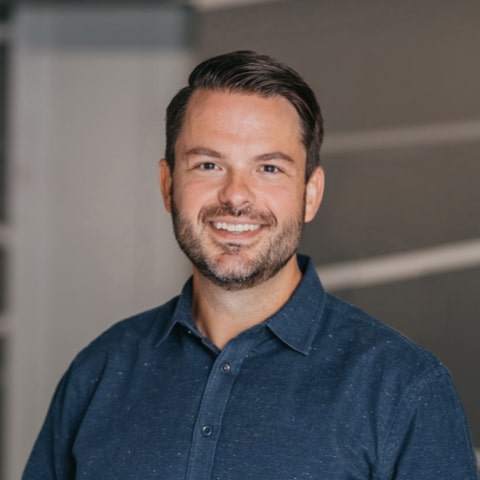
Cory Wheeler
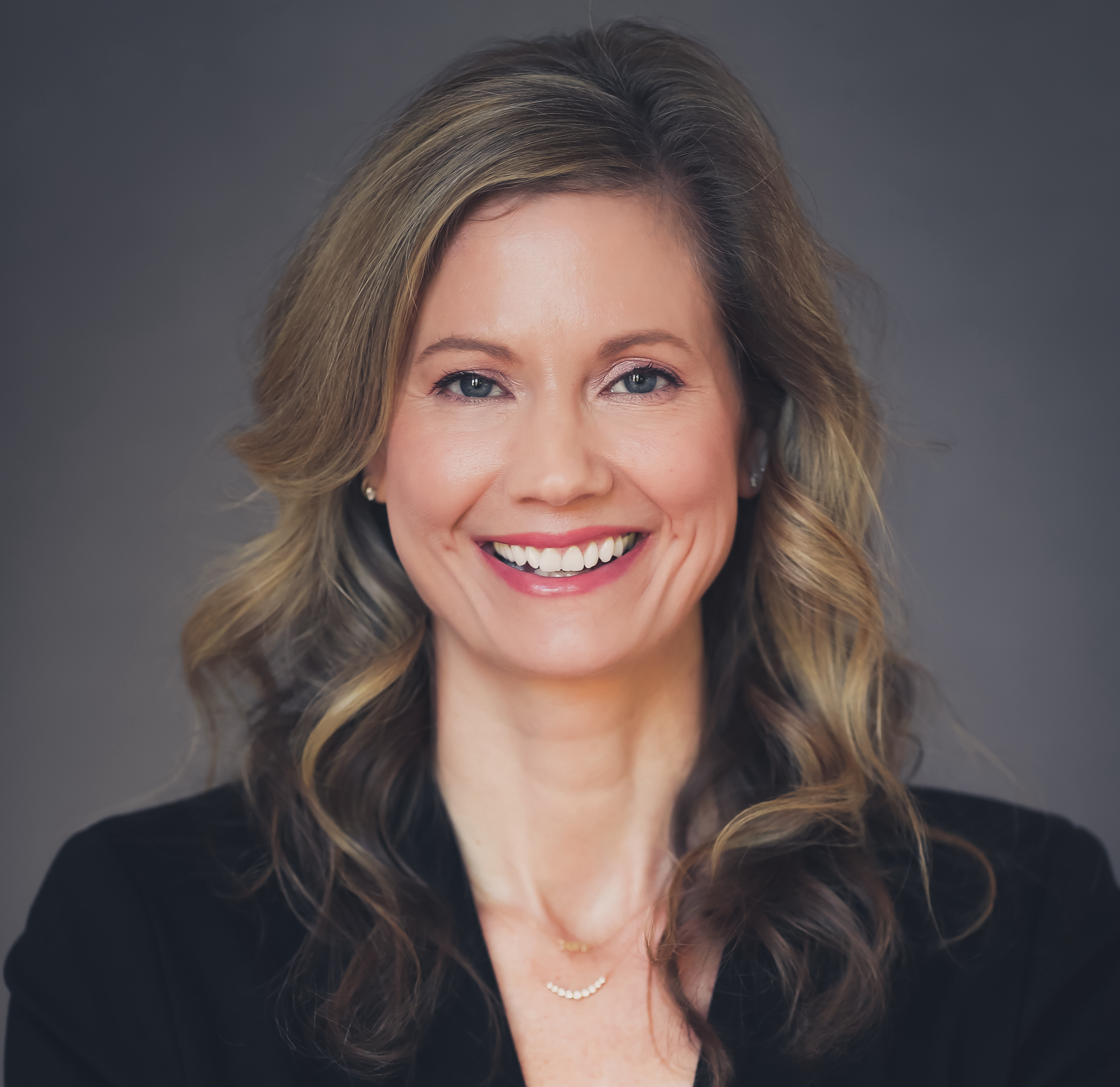
Meredith Albertson
Today's Guests


